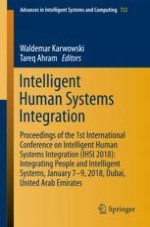2018 | OriginalPaper | Buchkapitel
CPR: Bright Side of Machine-Human Relationship
verfasst von : Shaik Farid Abdull Wahab, Ahmad Rasdan Ismail, Rohayu Othman
Erschienen in: Intelligent Human Systems Integration
Aktivieren Sie unsere intelligente Suche, um passende Fachinhalte oder Patente zu finden.
Wählen Sie Textabschnitte aus um mit Künstlicher Intelligenz passenden Patente zu finden. powered by
Markieren Sie Textabschnitte, um KI-gestützt weitere passende Inhalte zu finden. powered by
